
|
||
|
Portland art blog + news + exhibition reviews + galleries + contemporary northwest art
|
||
Interview with MK Guth
"I have no life," confesses MK Guth with a chuckle. "But that's off the record." What the overachieving Portland artist means, of course, is that outside of an accelerating art practice that has her touring a new project across the nation-state-hopping her way to the Whitney Biennial - and heading the new Masters in Visual Studies program at PNCA, she doesn't have a lot of time for hobbies. But Guth seems to be taking both her hectic schedule and success in stride. The Wisconsin transplant, who has lived and or shown in Portland for a more than a decade, maintains a sharp but accessible demeanor, which gives testament to the patience and persistence it takes to earn a national reputation from Oregon. Just before the launch of her traveling project for the Whitney, an interactive installation titled "Ties of Protection and Safe Keeping," Guth found time to talk with me in her studio.
Guth works in Southeast Portland, in what feels like a walk-in freezer, and her studio contains a visual feast of artwork. A colony of glittering red shoes, from Guth's ongoing project Red Shoe Delivery Service (a collaboration with Cris Moss and Molly Dilworth) fills the far corner. Photographs-both snapshot-type documents of performances past and slick lenticulars (you know, those ones that change as you walk by) depicting persons engaged in tugs-of-warâline the walls. Near the windows hangs the precursor to the Whitney piece: an impossibly long braid sprouting red fabric flags, each inscribed with handwritten text, that Guth created for a recent project in Brazil.
Guth wastes no time parking me in front of a video monitor and showing me the evolution of her art. Although she studied sociology at University of Wisconsin in Madison, she soon found herself pursuing a life in the arts. Her mixed-media sculptures attracted early attention in shows at Elizabeth Leach Gallery, where she continues to exhibit. In 2000, Guth left Portland for the MFA program at New York University, where she experimented with video and developed her ongoing interest in fairy tales. But Guth's fairy tales are different: stuck in the everyday and weighted by mundane frustrations, her heroes and heroines are often just common people trying to escape the commonplace. A work from graduate school depicts a foiled mugging, but the voice over reveals the superhero being interrogated by police for roughing up the would-be assailant during the rescue. In a more recent work, the centerpiece of her 2006 solo show, Rapunzel (played by the artist) sits on a couch and speaks to the viewer in reality-show confession style. As Rapunzel speaks of coming to terms with the distance between real life and the myth we imagine it to be, found footage from TV flashes in the background, and channel surfing becomes a realm of possibility as real as any rescue. Guth and I start by speaking about Red Shoe Delivery Service (RSDS), a series of projects-within-projects inspired by Dorothy's glittering Ruby Slippers. In RSDS Guth's methods have expanded from sculpture and video to collaboration with other artists and the random public. The project is structured around the act of transportation: Guth and her cohorts pull up in a van offering free rides (like your average kidnappers) around town. Those brave enough to accept get to don a pair of sparkling shoes and embark on a magical journey that can include encounters with other artists and art (Dilworth curates shows within the van), photo opportunities and, for some, life-altering conversations. The trio of artists has toured RSDS to Paris, Copenhagen, New York, Melbourne and Nottingham, and performed at PICA's TBA Festival. Get the whole story at redshoedeliveryservice.com. Ryan Pierce: Can you tell me a bit about how you developed an interest in fairy tales? MK Guth: Previous to graduate school, I was working with broader mythic paradigms. For instance, I once cast an entire kitchen in resin. When I went into school I wanted to go back to where I had first become interested in myths and storytelling. When I was young, like most people, I was into stories and fairytales and superheroes. Part of the reason I like using those stories and metaphors as pathways to other concerns is because I believe that, for a lot of people, our initial ordering of how things work in the world comes from those stories. Issues of this nature-what is good, evil, what are integrity and strength-all get developed when we're younger. RP: What about the transition you made from being strictly an object maker to working in video and interactive art? MKG: I see myself as an object maker, first and foremost, and even my videos tend to be very process-oriented. Working with video though is like learning another language- it allows you to talk to more people. When I started to think about things I wanted to say and how I wanted to say them, sometimes I felt like the objects themselves weren't always doing the job I had intended.
RP: Red Shoe Delivery Service seems like the first time that the interactive part of your work became as important as the objects. Can you tell me how this project came about? MKG: It evolved from a series of photos where I matched characters from my "Warriors" series with elements from fairytales: the Big Bad Wolf, Little Red Riding Hood, or Dorothy's Ruby Slippers. At one point they stand near a lumber pile and you see the Wicked Witch's striped legs coming out and a pair of Dorothy's slippers. And it's really funny-nobody ever calls me on the fact that those shoes are like a size 20. You know, with photography, you have to do something bigger to make it relay at all. I was still living in New York with Molly Dilworth, who is one of the collaborators, along with Cris Moss. We were sitting in the kitchen looking at those photos and I thought, "what would be interesting is if we could take that myth and the experience that's connected with it out of the object, out of the photos and into a real experience for people." I thought of making a bunch of these shoes and going around offering rides to people. Molly was like, "If you do that, I'll drive." I made a bunch of shoes, Molly and I hit the road in New York City, and we spent three days prepared to be, you know, completely abused by the public-which we kind of were-but not nearly as bad as we thought. We drove around and asked people if they wanted a free ride and in exchange we just asked them to put on a pair of the shoes, click their heels and say "there's no place like..." and we'd take them there. And remarkably, while some people turned us down, a lot of people chose to engage in the project. After that initial three days, when we realized it could be successful, we decided to think it out some more. I'm an object maker at heart, so when people talk about social exchange-based projects or experiential projects, or relational aesthetics, or whatever term you choose to use to use to describe these sorts of endeavors, for me it was important that it came back to the object, to some record of the experience. So from there we made a video where people click their heels, and they're edited to their next location with a spiraling heart, and music and glitter. At that point we realized that RSDS and that shared experience were one aspect of the work, but that that experience became the material to make new things. We have traveled this project so many places now, that we have a huge archive of photos and video footage to work with. RP: Can you share a story from your experiences doing RSDS? MKG: Well, we traveled with hundreds and hundreds of people. There are so many remarkable stories and it's so hard to choose. For the Melbourne Arts Festival we added another element to the project: a virtual travel agency. This became a device to get people to engage in the idea of fantastical travel. We made travel agency posters and we would take people's pictures and digitally transport them to the place of their choice: you know, the Midwest, 1928 Hungary, or just standing next to Superman or Britney Spears. We had a group of refugees come in from the St. Kilda refugee center. People from all over the world come to this place and many of them don't speak the same language, but they live together, so theyâre a sort of family. So they're working out where they want to go, how they want to be photographed, and at the end the matriarch of this group-who was in her late 60s-decided she wanted to take all of her new family back to her home town in Chechnya. And this was the first time we all broke down because we're like "No problem." But when we took their image we couldn't find a single image of Chechnya online that wasn't war torn. And we said, "We're really sorry, we'll work on this." And she said, "Do you see my problem? I have no family left. Everyone is dead due to this war. And now there is no longer even any images left of my land." We kept at it and that night we finally found a usable image and mailed them all postcards of themselves. So, in that project, while we were making what we thought of as a work of art, people were using it as a personal vehicle, for personal purposes. And that was pretty remarkable. RP: So what are you doing for the Whitney Biennial? MKG: It's an interactive braid project. It connects to the site, which is the Park Avenue Armory-the Armory for the 7th Regiment National Guard. They were well loved in New York, they protected the area during the Astor Place riot, and during the 30s and 40s they controlled civil strife and all that. So I wanted the project to connect. The space I'm in used to house the library and now it's the Silver Room, where they keep all their trophies. It was designed by Tiffany & Co and it's quite a sight to behold. So I'm asking people the question, "What is worth protecting?" People at the show can write their responses on a flannel ribbon, which are then worked into this long braid of synthetic blond hair. What's interesting to me about that question is that it operates on different levels: people can respond on the global level, the national level, or on a personal level. Maybe you want to protect free speech and maybe you want to protect your job. This notion is greater than a military act- it's something that comes into every aspect of our lives. So this project starts at the Armory in Portland (Portland Center Stage), and it travels to Boise, Atlanta, Chicaho (MCA), Houston (Diverse Works) and Cleveland, before finishing with ten days of braiding at the Armory in New York. The resulting braid is on display for the duration of the Biennial. I did a similar project in Rio de Janeiro, where the question was "What are your opinions of people from the United States?" I'm using this Rapunzel-like braid, because it can either be like ropes of imprisonment or a vehicle of escape. When we say, "People from other countries don't like us," we don't really know what that means. That's kind of a mythic statement in itself. RP: You've worked on projects all over the world. What keeps you coming back to Portland? MKG: Well, first of all I have a really good job here. I love teaching at PNCA. My husband and I thought a lot about moving to New York, and I like it there, but I also have a lot of friends here, a house and some cats. I also figured if I worked hard enough I could maintain a career here-it's a fairly global place these days-you just have to work hard to keep your voice out there and to make your work. And I like this place. I like the environment of this city, the way it's ordered...I have a lot of good friends here and I like the sense of community here. People say they hate New York or LA, but I don't feel that way at all. I like those cities. There are problems with those places but there are problems here, too. We have our own set of problems that we're trying to work through as the city grows up. RP: So how have you seen this art scene change since you've been here? MKG: Oh. My. God! (laughs) RP: And how would you like to see it change as well? MKG: When I came back from New York (from graduate school) it was a completely different art scene than when I left. For example, the Pearl District was not the Pearl District as we know it now. You know, there's many more dominant artistic voices here, thereâs a lot more ambition here. People aren't afraid to say that their art is their vocation. When I left, if you used the word 'career,' you were just awful. An artist I very much respect once reprimanded me for using that term in the 90s. I think PICA has made a big difference to this community, both in bringing a lot of people from the outside and in articulating to artists what it meant to go outside of the city. When you're making work, you may be working within a region, and engaging with that particular environment, but if you want it to connect with the rest of the world, than you still have to be looking outside. I would like to see more nonprofit art centers here. We need more arts infrastructure. More support for PICA, more support for PAC (Portland Art Center). A city of our size should have multiple arts institutions at different levels. PAC and Gallery Homeland serve a lot of artists that do not necessarily show in the gallery system. For us to exist on every platform of art making then we have to have that type of infrastructure. The other issue is there are simply more artists here than ever before and there needs to be places for them to present their work. Adding an MFA program at PNCA helps. Portland State has a great MFA program that's growing and evolving every day, and adding a program at PNCA helps to build that infrastructure. But for example, that's maybe the big difference between San Francisco and Portland. San Francisco has a remarkable infrastructure. There's many different schools, multiple nonprofits of all different characters. This city needs to find a way to support those things. And when it doesn't work out, instead of saying, "Okay, let's start all over again," we need to find a way to help them out, to help them evolve. But it's so much better than it was before. Before, it was like pulling teeth to get a studio visit. And I mean for people in the city. It wasn't common, but that's beginning to change. And not only are there different types of art being made here, but there are more places for it to show. Also, MFA programs are a site of discussion- there is a constant dialectic around art, art making, and the precepts and theories that surround it. And that's good energy. We're growing. RP: What would be your advice to a young artist trying to make a career from Portland. MKG: Two things. One: make work. I mean, this is a very lovely place to live. We have great food culture, you can go camping, and sometimes that can get in people's way. That's the number one thing. When people come to town (for a studio visit) if you're not packed full, then there's nothing to see. Another thing is to ask people for studio visits: other artists, curators, critics. The more people that can get into each other's studios the better. I got into a group show in Switzerland because a piece of mine was hanging in a friend's studio in New York. RP: So make sure to give your work to your friends. MKG: Well, yeah. People get passed from one person to another. But this is also about a shared conversation among artists. RP: Have you kept a network from your MFA program? MKG: Yeah. A good network. NYU was a really big school, but had a very small program. There were only eight people in my year. Molly Dilworth and Chris Moss, who do RSDS with me, were in that program, and Molly will be helping me with the Whitney project. RP: You're the chair of the new MFA program at PNCA, which we've mentioned. What kind of students is the MFA program at PNCA attracting. MKG: We're lucky. It's a really incredible group. They're from all over. We have someone doing photography and multimedia who has a history degree from Portland state. Someone from RISD. We have students from Atlanta, Chicago, Bozeman. They're working in different disciplines. There's nobody behind them-they're the first group- and they have a lot of agency as a result. They are defining what that program looks like. And they meet up once a month with the PSU MFAs for social mixers-it's great. RP: How has your role as the head of the MFA program affected your role as a studio artist? MKG: Well, it's a serious full-time job. Because it's a new program, it's developing itself as we speak. There's an architecture and philosophy that was developed through the taskforce that created this program. The idea, in essence, was to create a program that would mirror an artists' practice rather than mirroring an institutional structure. So that's why it's multidisciplinary and mentor-based. So I get up at the crack of dawn and work for two hours before I even start with PNCA. I'm working by six in the morning almost every single day. I work on weekends, I don't really do days off or, if I do, it's connected to some art event. I do believe my husband's making me dinner tonight, which will be the first time we've hung out in probably a month and a half. Because, after this, all hell breaks loose. After the Whitney I immediately go to Yerba Buena (Center for the Arts in San Francisco). It's another braid project, but it's two days of braiding off my head. A uniform is being built with an armature that will hold this hair and over that time a huge sculpture will be created (laughs). It's an endurance project. Those days I used to spend in the studio when I was a part time teacher don't really exist anymore. There's curriculum, orchestrating a visiting artist program...and our program is different because we don't need to do a lecture series. Harrell Fetcher and Portland State offer what I think is one of the most remarkable services this city has, hands down. So we treat our program a little differently, more as a site of possibility. Sometimes it's open to the public, sometimes not. Joseph Del Pesco's coming in and taking all the students away somewhere... RP: So get the waivers ready. MKG: There's gonna be a big potluck or something with Lucy Orta. So sometimes it's lecture based and sometimes it's just an exchange on some other level. So that has to be authored, and that job is, you know, it's hefty. RP: Lastly I want to ask about your non-art inspirations. Aside from a background in sociology and the obvious interest in fairy tales, what feeds the studio work? MKG: Fiction influences me. Everything from comic books to Cavalier and Clay by Michael Chabon, or House of Leaves by Mark Danielewski. The structure of those novels- the way they turn the structure on its side and create stories within stories...David Foster Wallace, in Infinite Jest, uses footnotes to reveal hidden components within the story. When I was figuring out how I wanted to use video, those novels got me to think about how you could structure a narrative. I also like David Lynch, and the surreal quality of Wim Wenders. Obviously I have great interest in film, but figure out how to employ and disrupt a narrative structure, you can't just look at film. When you think about, in literature, the way narrative structures have evolved, when you go from Flaubert to Proust all of a sudden a story can take place in retrospect. Holy crap! That's amazing! Nothing like that had ever been written before. And then go from Proust to Virginia Woolf and stream of consciousness writing-it's giving me the shivers right now just talking about it. Or Joyce writing a book that's not meant to be read once, but to be reread like you walk through a city...
Storytelling is interesting to me and I use it as a vehicle in my work, as a way to begin a conversation. You know, Rapunzel is a way to connect, and then you can add content from there. There are three points embedded in my work, three things I'm always interested in: one is transformation, one is risk-taking, and one is desire. The hope to be something else, what it takes to get there, and the risks required. Posted by Ryan Pierce on January 08, 2008 at 9:51 | Comments (4) Comments In reading Ryans interview I realize there are so many people and things I did not mention in relation to how the cities has changed. In particular how Stephanie Snyder's energy, generosity and curatorial expertise has made a profound affect on our city. Stephanie has brought remarkable exhibitions to the city as the curator of the Cooley Gallery, Gregory Crewdson, Lucien Samaha and Hadley + Maxwell to mention a few. Beyond her function as curator of the Cooley Gallery at Reed she has also been a great arts leader in this city giving vast amounts of her time to artists and many art institutions a like. Portland would be a very different place with out her. Posted by: mkguth Oh you are a peach! The thing where I have noticed the most change in Portland... is the fact that when I moved here you and Liz Leach were about the only superfeisty/knowledgable people who were well aware of what was going on globally. Now people I dont even know come up and ask me things... or better yet I just overheard 2 middle aged people discussing why they felt Richard Prince was overrated in very intelligent terms. The level of discussion has changed and the list of vthose responsible is VERY long. Here's a good start to a list of people who have moved here or back since I moved to Portland April 1st 1999 and have changed the fabric/expectations here: Bruce Guenther All of vthse people organize cultural activity on a regular basis and catalyze it in smart ways (not just words and potential). Their efforts have made permanent changes for the better here while keeping Portland unique... we dont just import what is hot in Chelsea at the moment... sometimes we are ahead of their curve. That said there is a lot more to do. Honestly I'm very proud and impressed with everyone on that list.
Posted by: Double J one more note Posted by: mkguth doh you are right no list is valid without Harrell lets add: TJ Norris
Posted by: Double J Post a comment Thanks for signing in, . Now you can comment. (sign out)
(If you haven't left a comment here before, you may need to be approved by
the site owner before your comment will appear. Until then, it won't appear
on the entry. Thanks for waiting.)
|
| s p o n s o r s |
 |
 |
 |
 |
 |
 |
 |
 |
 |
 |
 |
 |
 |
 |

|
Site Design: Jennifer Armbrust | • | Site Development: Philippe Blanc & Katherine Bovee | |


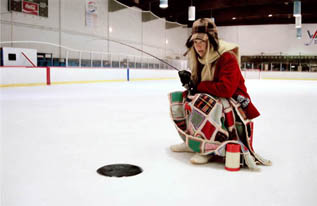
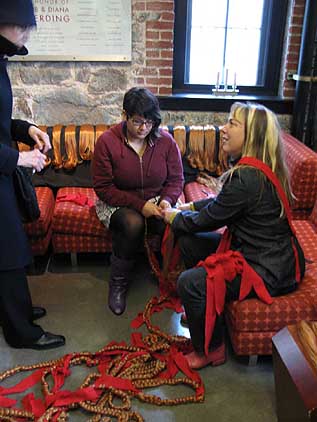
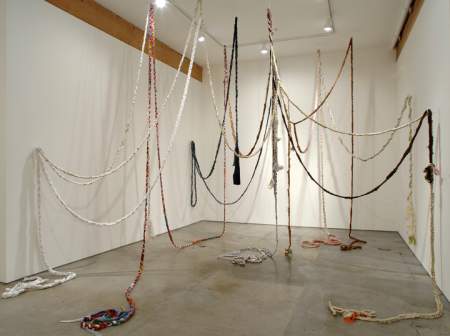
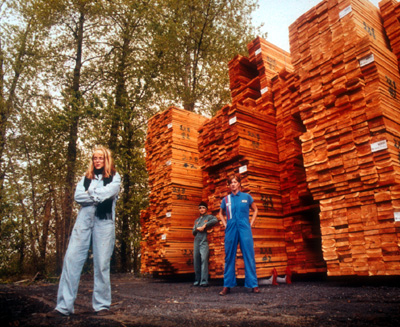
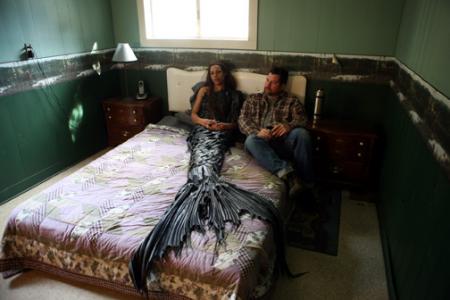
![[TypeKey Profile Page]](http://www.portlandart.net/nav-commenters.gif)